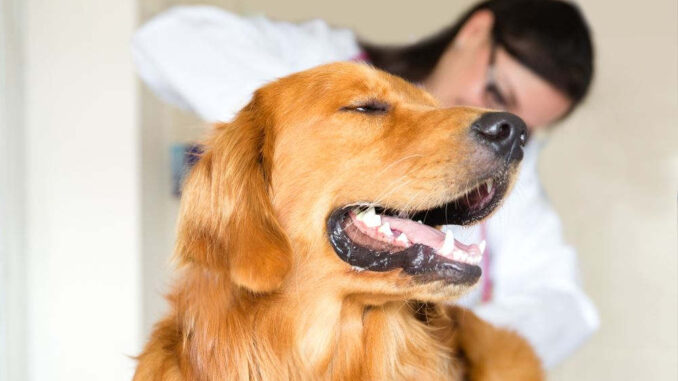
This article was updated on March 8th, 2024
As a veterinarian, I frequently see dogs with anal gland issues. It’s also something that many pet parents have questions and concerns about. Expression of a dog’s anal glands is sometimes necessary to prevent and treat certain health complications. However, side effects, including irritation or bleeding, can sometimes occur after expressing a dog’s glands. This may be related to the anal gland expression itself or the underlying issue. Here’s what pet parents should know.
Top reasons causing bleeding after dog’s anal gland expression
Accidental Trauma
Expressing the anal glands requires a certain amount of pressure. If done too aggressively or without proper technique, it can cause minor injuries to the surrounding tissue. This is especially true when pet parents or groomers attempt to express their dog’s anal glands using an external technique, which can lead to incomplete expression and irritation.
Pre-existing Conditions
There are several possible anal gland issues that commonly arise in dogs. Symptoms include scooting, licking, swelling, irritation, and purulent (pus) or blood-tinged discharge.
- Impacted anal glands: If the anal glands are severely impacted (full) with thick secretions, expressing them can be challenging.
- Anal gland infection: An infected gland will have thickened secretions and inflamed walls.
- Anal gland abscess: An abscess is a pocket of pus. An abscessed anal gland may rupture and ooze fluid, pus, or bloody discharge.
Tumors or Growths
Anal gland tumors, though less common, can be a cause of bleeding. If a tumor is present, any pressure on or around it might cause it to bleed. Other benign growths or polyps in the region can also get irritated or injured during the procedure.
Other
Sometimes, small tears or fissures can form in the anus or surrounding tissue due to hard stools, trauma, or other reasons. Expression might aggravate these fissures, causing them to bleed. In dogs with certain skin conditions, allergies, or thin skin, the area around the anus may also be more susceptible to irritation. If your dog has colitis or blood in their stool for another reason, it may be mistaken for bleeding from the anal glands. Finally, dogs with blood clotting disorders might experience prolonged or excessive bleeding.
Should I be worried? Can bleeding be temporary?
A few spots or a minor smear of blood is usually not a cause for alarm, especially if your dog was diagnosed with an anal gland infection or abscess. However, in cases of prolonged or excessive bleeding, or if your dog seems distressed, exhibits excessive licking, swelling, pain, or other signs of illness, it’s best to consult your vet.
Steps you can take at home to help your dog
The best ways to minimize the risk associated with anal gland expression are to:
- Ensure that anal gland expression is done by a veterinary professional.
- Stay updated on the dog’s overall health.
- Consult your veterinarian if you notice any unusual symptoms or prolonged bleeding post-expression.
Additionally, the following steps can be taken at home to help prevent anal gland issues in your dog.
Keep your dog at a healthy body weight
Dogs who are obese are at higher risk for developing anal gland issues, as well as other medical conditions such as arthritis and diabetes. You can keep your dog at an appropriate body weight by learning how to monitor their body condition score, feeding an appropriate amount of food, cutting back on treats or using lower calorie options, and increasing exercise.
Promote gut health
Dogs who suffer from diarrhea or constipation can have difficulty emptying their anal glands, leading to anal gland infection or abscess. Feeding a consistent diet, avoiding excessive treats or table scraps, and adding in a probiotic such as Fortiflora, can all be beneficial for your dog.
Increase fiber intake
Fiber can help bulk up stool and stimulate anal gland emptying during defecation. Additional fiber may also be helpful in promoting GI health and maintaining an appropriate body weight. Options for adding fiber to your dog’s diet include:
- Canned pumpkin (not pumpkin pie filling) – work your way up to approximately 1-2 teaspoons per meal for small and medium dogs, and 1 tablespoon per meal for large dogs. Too much may cause diarrhea.
- Metamucil – discuss dosage recommendations with your vet
- Glandex soft chews – These peanut butter-flavored chews contain fiber, probiotics, and digestive enzymes to help bulk up stool and promote GI health. Glandex also offers anal gland supplements.
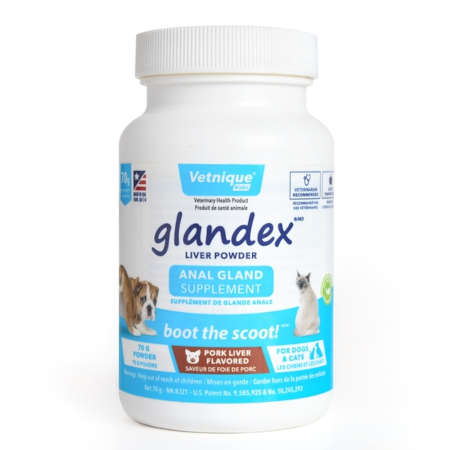
- Fiber capsules – These unflavored capsules are easy to administer and formulated for veterinary use.
Omega 3 fish oil
These products have benefits for skin and joint health, as well as acting as a natural anti-inflammatory.
Put on an E-collar
Putting an E-collar on your dog will help keep them from licking and chewing at their anus and tail base, which can cause further inflammation and infection and prevent healing.
Apply a warm compress
If your dog tolerates it, applying a warm compress to the area for approximately five minutes twice a day may help with comfort and promote drainage of an abscess.
Manage any underlying issues
If your dog has other underlying medical conditions, such as allergies or gastrointestinal disease, it will be important to discuss this with your vet and come up with a treatment plan.
Should I see my veterinarian about this?
Always keep a close eye on your pet after any procedure, no matter how routine it might seem. Dogs often hide their pain or discomfort, so any change in behavior can be significant. If you’re ever in doubt, it’s always best to err on the side of caution and consult with your vet. Even if it turns out to be a minor issue, getting professional assurance can provide peace of mind. Depending on the situation, your vet might prescribe antibiotics, antiinflammatories, topical treatments, or advise further interventions.
If your dog is being treated for an anal gland infection or abscess, it is normal to notice mild spots of blood, redness, licking, or scooting, which should improve significantly within a couple days of starting treatment. However, the following signs do necessitate a call to the veterinarian:
- Excessive or prolonged bleeding: If the bleeding doesn’t stop within a short period or is heavy, you should contact your vet immediately.
- Signs of severe pain: If your dog is yelping, highly agitated, or showing signs of significant distress, it’s crucial to seek veterinary care.
- Swelling or large lumps: Any sudden swellings or noticeable lumps around the anus or in the adjacent areas should be evaluated by a vet.
- Purulent discharge: If there’s a pus-like discharge from the anal area, it might indicate an infection or abscess.
- Open wound: An open wound or ruptured abscess will require veterinary care.
- Behavioral changes: If your dog becomes lethargic, refuses to eat, or displays other uncharacteristic behaviors, it’s a sign that something might be wrong.
What are anal glands, and why are they expressed?
The anal glands are two small sacs located on either side of a dog’s anus. They produce a fishy-smelling fluid that dogs use to mark their territory. Under normal circumstances, the fluid is naturally released during defecation. However, in certain cases, the fluid doesn’t get expelled, which may lead to potential problems such as impaction, infection, or abscess formation. Some dogs never have issues associated with their anal glands, while others require frequent expression to keep issues at bay.
Disclaimer: This website's content is not a substitute for veterinary care. Always consult with your veterinarian for healthcare decisions. Read More.


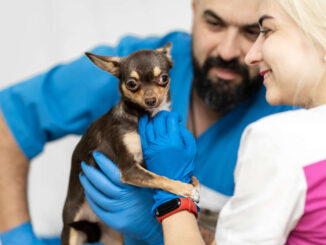
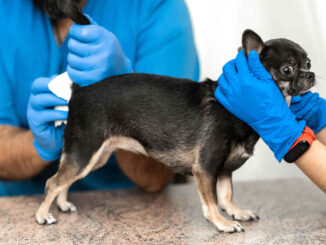
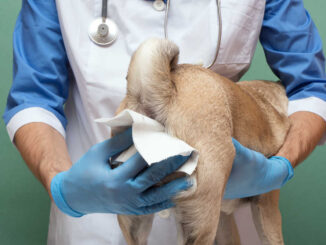
Be the first to comment